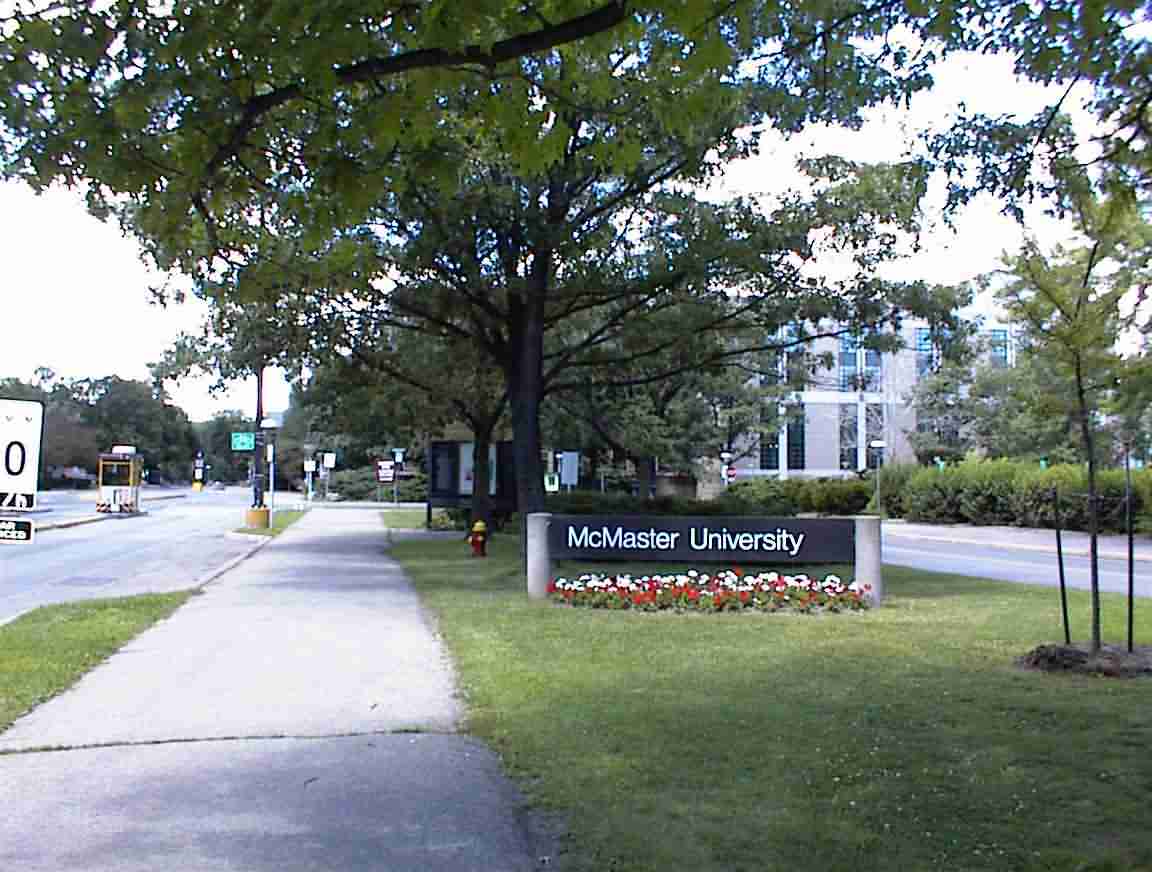
23 July - Day 48: Dundas ON to Niagara Falls ON - 104.2 km @ 20.4 km/h
It had been a late evening so I took it easy in the morning. I had a short ride ahead of me, only about 100 km, so I wasn't overly concerned about time. After a leisurely breakfast I sat with Milan and discussed business organisational plans. He has a growing small business and was interested in hearing how we proposed to implement an employee share plan.
Eventually I got my act in order and headed out, the family waving me goodbye. It was only later that I realised I had forgotten to get a photo. Have to wait until my next visit.
My plan was to cycle to Hamilton and visit McMaster University where I had done my B.Eng. from 1978-83. I had only been back once in the intervening years and the alumni magazine had piqued my curiosity since it seemed that there had been a number of changes.
As I cycled through Dundas towards Hamilton I saw an elderly woman about 200 m ahead of me stumble on the sidewalk and fall, spilling the contents of her shopping bag into the street. Fortunately it was a Sunday morning and there was not much traffic on what is usually a busy street and I rushed ahead and helped her up as best I could without dismounting. My bike is very unstable when I am off it and I feared that I couldn't manage both the woman and the bike.
I gathered her goods back into the bag and steadied her. She said that she was fine and would continue on but I decided that although there were no visible signs of problems that I should go with her so I insisted that I come along and gave her my arm. It was a good thing since after a couple of steps she stumbled again and was obviously not in a very good way. Help was at hand with a woman who drove up. A physiotherapist, he had seen the incident and offered to drive the elderly woman: much more viable than on a bicycle! I had no problem about leaving my charge with someone eminently better qualified (and equipped) than myself and I continued on to Hamilton.
McMaster University is on the boundary of Dundas and Hamilton and so I reached it in no time. I recalled that the hill up to the university was long and hard but I hardly noticed it. Either a reflection of my current fitness or my faulty memory. Either way it was easier than I expected.

Being a Sunday in July the university was not exactly a hub of activity. I was therefore able to cycle around exploring without the fear of dodging pedestrians or being hassled by Mac-5-O as we used to call the campus security officers. My first stop was the engineering school where I got the photo below.
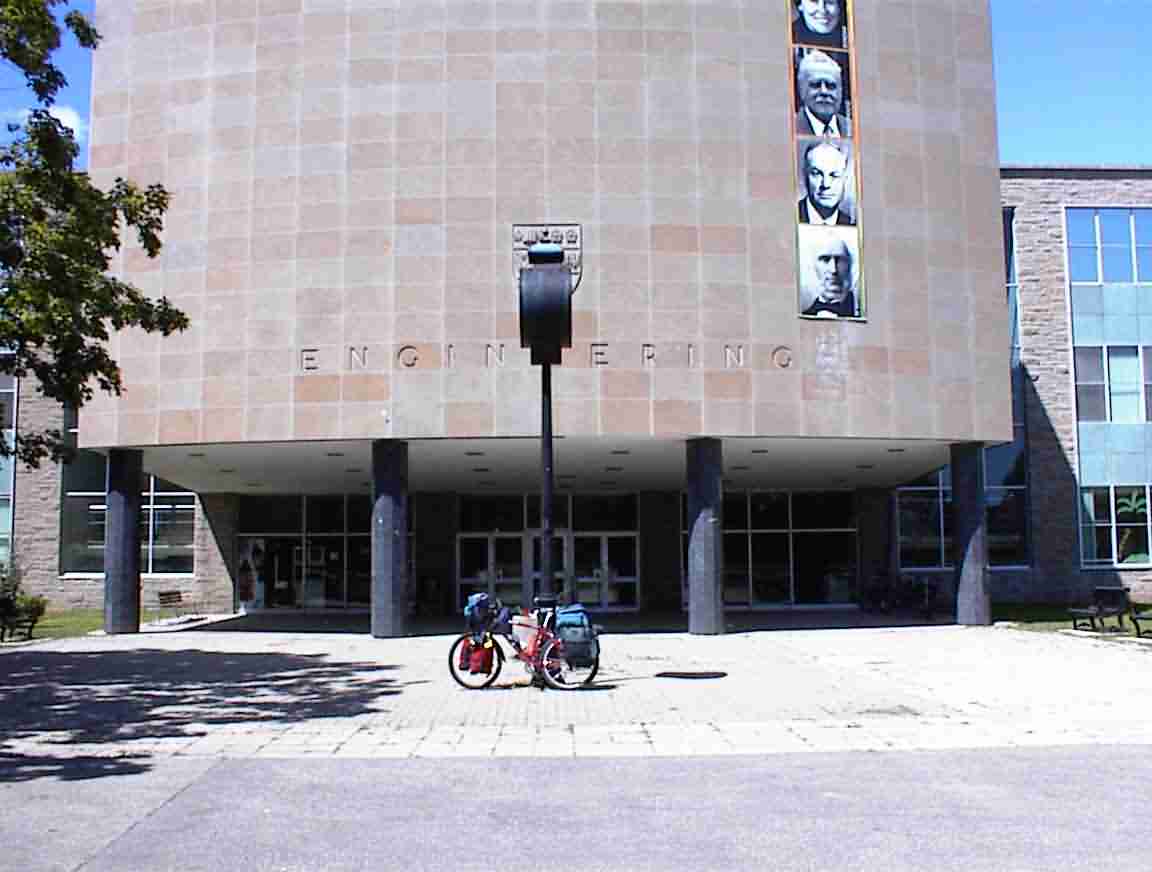
One of the doors was unlocked so I went into the lobby. It had changed quite a lot--there was even a coffee bar to get food! We used to have to go across campus which was a hassle in the midst of winter. I found a directory and was surprised to see quite a few familiar names. I would have thought that 25 years on there would have been more changes, but academia changes very slowly.
I biked around campus and went over by the halls of residence. There was at least one new building and the campus had definitely been spruced up in many ways. I was very surprised to come across a deer on the north end of the parking lot which backed onto a nature reserve. I don't recall ever seeing them before on the campus.
Eventually it was time to move on and I cycled past the various mansions adjacent to the university and into Hamilton. The roads were still the scary one-way system with people driving at high speeds but I remembered the names and the general layout. Hamilton is an industrial town, home to Canada's steel industry. Try as it might the place cannot shake off that legacy and although great efforts had been made to spruce the place up, it was still a pedestrian/cyclist unfriendly place lacking character. Not quite a dump, but nothing too spectacular. I cycled to the centre of town and then turned inland up the 'mountain'.
The Hamilton mountain is part of the Niagara escarpment which runs from New York state into Ontario. The main part of Hamilton is wedged on the flat land between the mountain and Lake Ontario while the newer suburbs are sprawled out on top of the escarpment heading inland from the lake. The ride was steep but not too difficult and I admired the many old, grand houses which were built on the banks of the escarpment.
Once on the top I cycled inland until I managed to find Highway 53. It was much further than I had expected it to be and asked directions twice just to make sure that I hadn't missed it. The big problem in urban areas is that roads aren't always correctly sign posted or that they are given different names. However, neither applied here and eventually I found the road and turned south.
Milan had told me that this was the most scenic route to Niagara Falls as well as one of the most direct. In the (to be forlorn) hope that it would be a marked improvement in beauty over my last two days of cycling in Ontario I had decided that this was the route for me. It also had the advantage of passing by their business so I was invited to come and see their factory and have lunch before continuing on.
Milan and his wife Lilian run M&L Gourmet Enterprises Inc. They have a range of products and activities and I found it fascinating to wander through their warehouse. The shelves were lined with nuts, chocolates, candies, etc. which they had bought in bulk and packaged into clear, plastic containers. They then supply these to merchants such as grocery stores or petrol stations who sell them. Milan gave me a demonstration of their production line and equipment which was quite interesting. The container is put on a scale and the machine automatically adds the required weight, plus a bit extra. It is illegal to be underweight. The operator then puts on a lid, a plastic 'band' around the outside, and pushes it down the a small conveyor belt which moves it into a heat box which shrinks the band sealing the container.
Lilian's father used to sell hot cashew nuts in N.Z. and he had designed and fabricated his own nut warmers for the shops. Milan proudly showed me his version which was very well thought out. It was designed so that the enclosure was separate to the nut holder which meant that only part of it needed to be cleaned.
In an upstairs room I saw the full range of products, from Belgian chocolates to fruit trays. The latter were very popular at Christmas time and I can see why. They would make ideal and healthy presents.
We went to Chicken Chalet for lunch where I had a vegetarian hamburger. It is so different in the east to the mid-west or west where it was difficult to find anything vegetarian to eat at restaurants. We spent some time discussing recent events in N.Z. and I really enjoyed being able to spend the time with them. I got the photo below of them in front of their delivery truck as I was leaving.
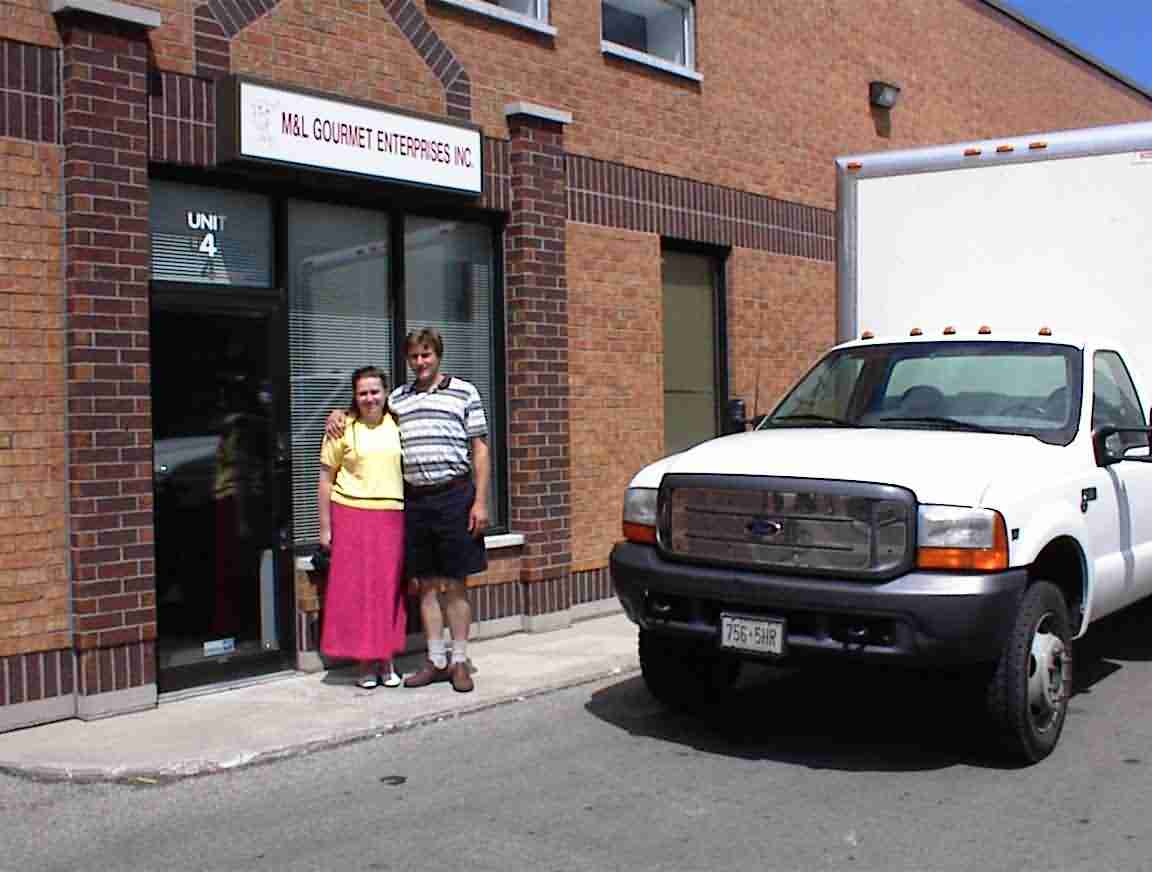
It was mid-afternoon before I was on my way again. There was a wicked headwind of about 10-20 km/h so it was difficult to make progress, even though the land was very flat. I was running very late so I called Susan Novak who I was staying with in Niagara Falls to give her an ETA of about 20:00. She was very understanding and said that would not be a problem.
The trip was quite forgettable with rolling farmland and the occasional small town. The scenery was nothing special and it made me wonder about the other routes since this was supposed to be the most scenic. I guess I've just been spoiled by what I've cycled through.
The one bit of excitement happened when I saw the structure in the photo below in the distance. I had reached the Welland canal.
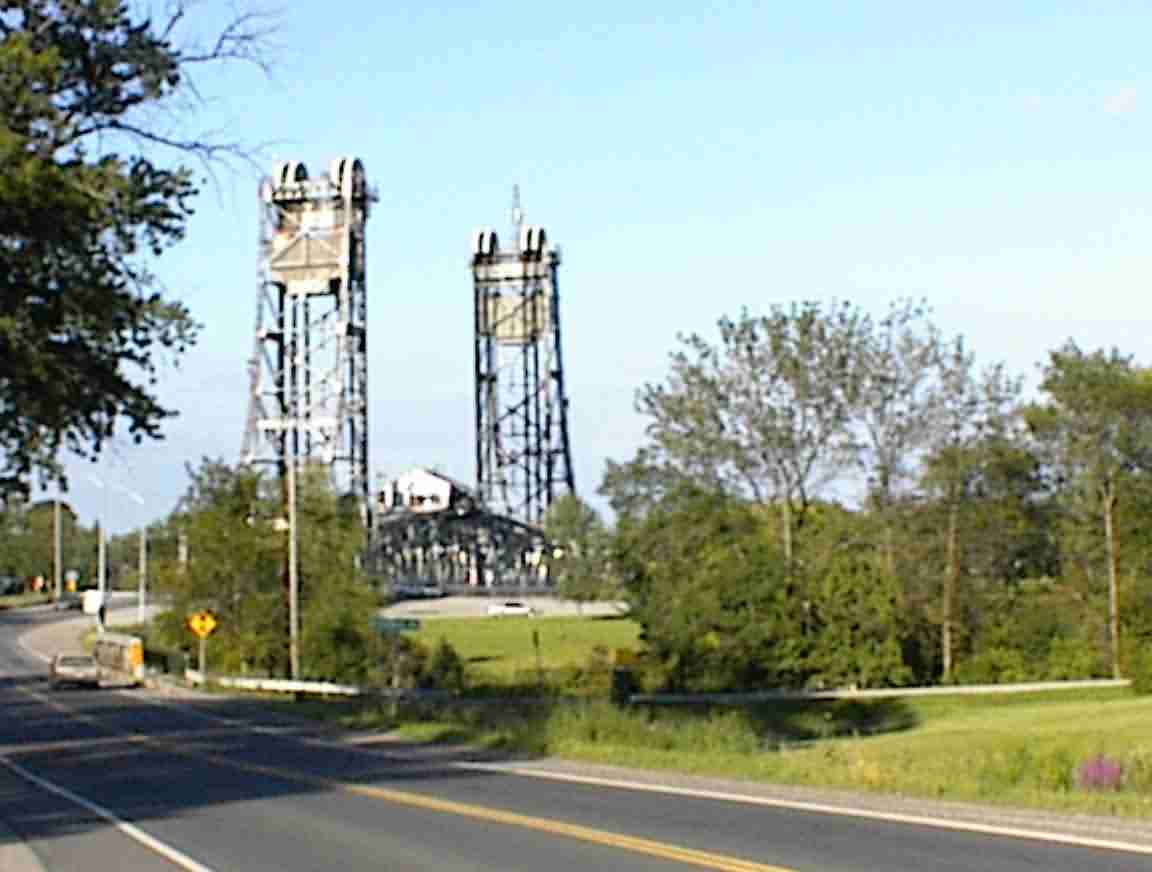
There are five great lakes; Superior, Michigan, Huron, Erie and Ontario. Lake Ontario is the easternmost and is at a much lower elevation than Lake Erie. Niagara Falls is one manifestation of this elevation difference; there are also rapids downstream from the falls.
The Welland canal was built in the mid-1800's to provide a route through Canada, removing the reliance on the Erie canal which went through the USA. Although strategically quite important to Canada, it was financed entirely by private individuals. It was successful and later enlarged to the current barge canal; the lift bridge in the photo is on the barge canal.
The reason for this concern about reliance on the USA for any transport links was due to the War of 1812. The origins of the war are complex, but it is one of only two wars (the other being Vietnam) which the Americans did not win. While American text books apparently maintain that they did win the war this is simply untrue. Had this been the case, Canada would have ceased to be under British rule.
There were several fields of battle in this war, but the area that I was cycling through--the Niagara peninsula--was where the fighting was the most intense. As was so often the case, the British were under-manned, but unlike in 1776 they had some brilliant leaders who helped them to carry the day.
General Brock was one of them, and he defeated first major American invasion of Canada at Queenstown, where he was killed. Later, General Drummond won the war's most decisive, and bloody battle, at Lundy's Lane. In between there were many smaller battles with each side having its share of victories and defeats.
One question that Canadians like to ask is why the White House is white. We were taught that it was because when the British burned Washington D.C. they used whitewash to cover the char marks. This was in retaliation for the Americans burning Toronto (then York).
In light of the importance of this part of the country to Canadian history, I was saddened to see how in many respects the war had been lost. I say this since as I travelled into Niagara Falls along Lundy's Lane the strip development rivalled anything that I had seen in the USA. Line after line of motels, restaurants, pubs, girlie bars ("100 girls every night" one advertised), all with garish lights. In all my previous visits to Niagara Falls I had managed to avoid this area and it came as quite a shock. The photo below gives you some idea of what it is like, but one really has to be there.
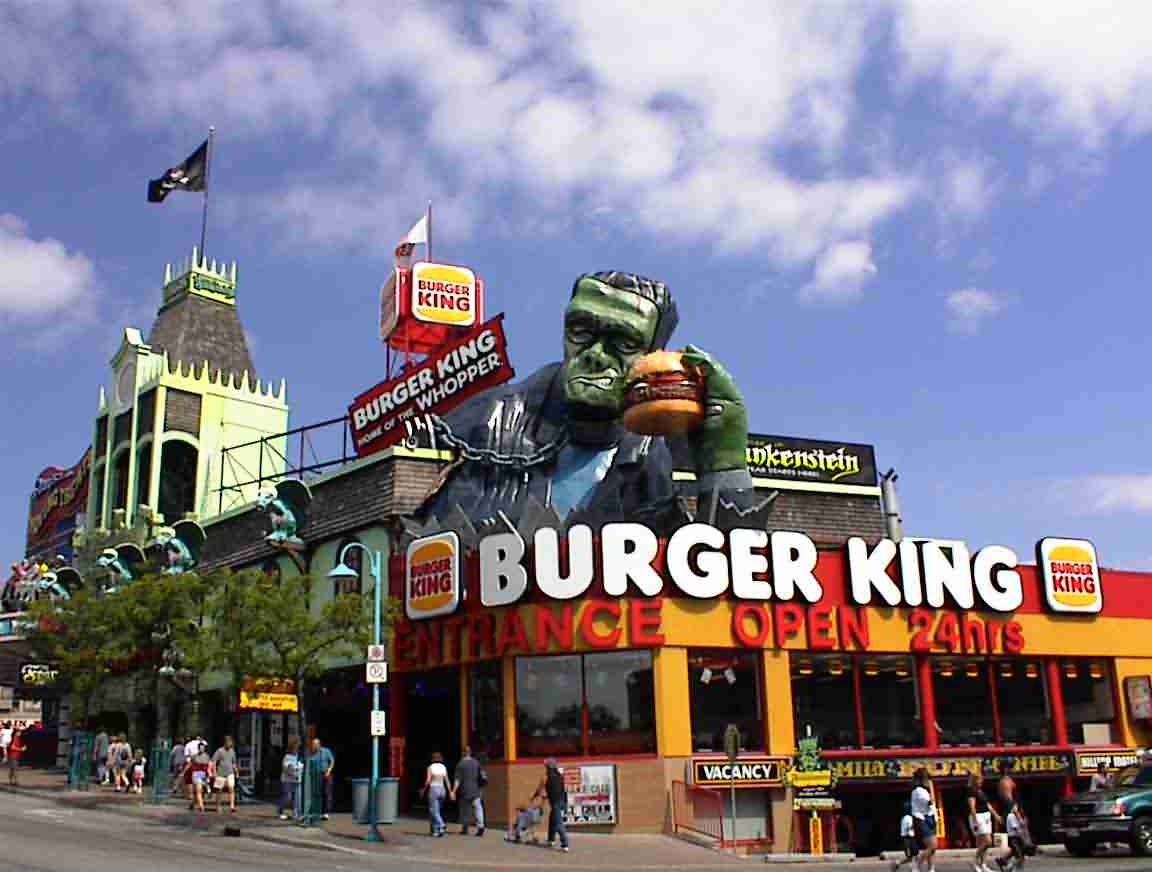
As I descended to the city I noticed a lovely old building which was the museum and I made a mental note to return there the next day. Then it was into the "Tourist Area" as it is called which was absolutely jammed with people, cars and buses. I felt most vulnerable in the mob and was pleased to escape it down to the promenade in front of the falls.
It was late in the day so the lighting wasn't very good for my mandatory celebratory photograph. I donned my T-shirt and had a tourist from Philadelphia take the photo.
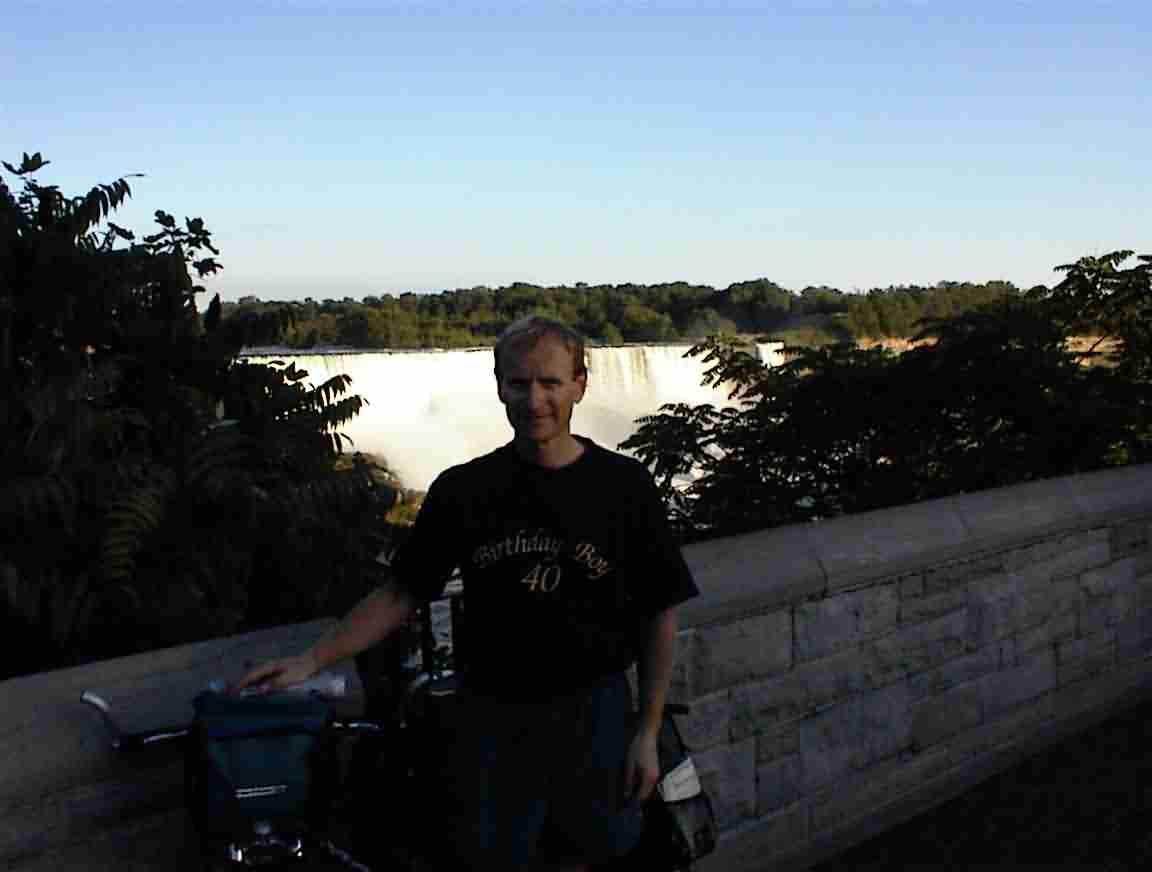
Behind me you can see the 'American Falls' which are entirely on the USA side. The more famous 'Horseshoe Falls' are jointly shared by the USA and Canada. They are more scenic and thus more photographed, but the light was too low for me to get a meaningful photo.
I dodged the tourists and made my way along the promenade to a telephone and called Susan. She gave me excellent instructions and using a tourist map which a local tout gave me I was able to navigate to her house without any problems.
Susan and I had worked together on a project in Thailand for a Montreal based company Dessau-Sophran. She had since left the firm and joined another engineering company Acres, based in Niagara Falls. An environmentalist, she was building up their international work in this area and was off to Laos in about 10 days.
It was delightful to see her again as I've always enjoyed her company. She is the antithesis of most people employed by engineering firms in that she is very artistic, having trained as an architect, and is most interesting to talk with. Originally from the USA, she had lived in Montreal for many years one of my first questions was how on earth she coped with a move to a provincial city, and tourist trap, like Niagara Falls. The contrast with Montreal, probably the most cosmopolitan city in North America, could not be greater!
It was a long story but she visits Montreal regularly and has not settled in Niagara Falls permanently. I was relieved to hear this as it would have been a blow to the impression that I had of Susan. Her house didn't let her down; it was built around 1805 and was full of nooks and crannies and oozed character. She told me that the British troops mustered in front of her house to battle the Americans and there was a plaque on the wall identifying it as a historical house. The inside was painted in pastels with walls adorned with modern art.
Over a delightful dinner we discussed the life of an expatriate, projects, colleagues, history and a myriad of other topics. It was great. I also shared some observations on Laos which is an amazing country, but with pitfalls for the unwary expatriate. The occasional bomb doesn't help things either. Finally around midnight we called it an evening and I collapsed into bed, Susan having gracefully given me her room and taking the couch. I couldn't prevail upon her to let me do the gentlemanly thing so at least I slept very well.
On to the Next Day or Back to the Home Page
loans loans loans loans loans loans loans loans loans loans loans loans loans loans loans loans loans loans loans loans loans loans loans loans loans loans loans loans loans loans loans loans loansloans loans loans loans loans loans loans insurance insurance mortgage mortgage